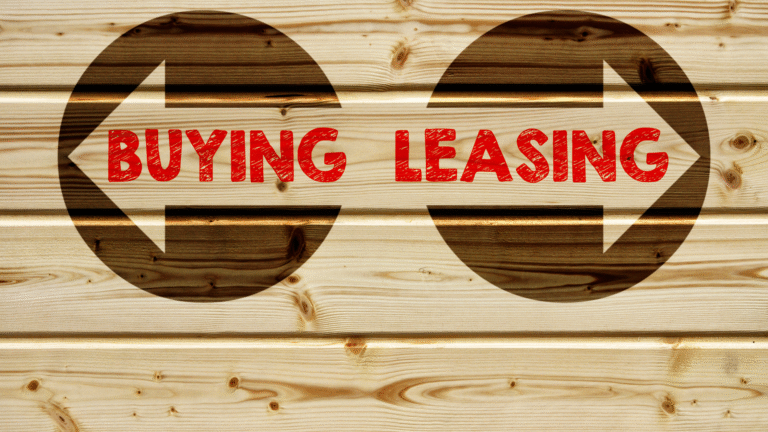With the growing popularity of electric vehicles (EVs) in Australia, more drivers are asking not just “Which EV should I get?” but also “Should I lease or buy?” The answer depends on your budget, driving habits, lifestyle preferences, and how quickly the EV market evolves.
In this guide, we break down the pros and cons of leasing versus buying an electric vehicle in Australia. Whether you’re a first-time EV driver or a seasoned green commuter, this comparison will help you make the most financially and practically sound decision.
—
Table of Contents
- Leasing vs. Buying: What’s the Difference?
- Pros and Cons of Leasing an EV in Australia
- Pros and Cons of Buying an EV (Outright or with Finance)
- Cost Comparison: Lease vs. Buy Over 3 Years
- Key Factors to Consider Before Deciding
- FAQs
- Conclusion
—
1. Leasing vs. Buying: What’s the Difference?
🔄 Leasing an EV:
- You make monthly payments to use the vehicle for a fixed term (typically 2–5 years).
- At the end of the term, you return the vehicle or may have the option to buy it.
- Common in Australia via novated leases (salary packaging) or business leasing programs.
🛒 Buying an EV:
- You either pay upfront or finance the purchase through a loan.
- You own the car, can modify it, sell it, or keep it long-term.
- You’re responsible for depreciation and resale value.
Both options have unique benefits—especially in the fast-evolving world of electric mobility.
—
2. Pros and Cons of Leasing an EV in Australia
🟢 Pros:
- Lower monthly payments compared to financing a purchase.
- Access to new models every few years.
- Avoid long-term commitment as EV tech evolves quickly.
- Businesses can benefit from tax deductions and simplified fleet management.
- Novated leases (via employer) may offer pre-tax savings.
🔴 Cons:
- No ownership equity at the end of the term.
- Annual kilometre limits and wear-and-tear clauses.
- Can be more expensive over the long term if you continually lease.
- Early termination fees can apply.
⚡ Leasing Insight:
In Australia, novated leasing is popular for EVs due to Fringe Benefits Tax (FBT) exemptions available for eligible models under $89,332 (as of 2025).
—
3. Pros and Cons of Buying an EV (Outright or with Finance)
🟢 Pros:
- Full ownership—no limits on kilometres or usage.
- Better long-term value if you keep the car beyond 5 years.
- Eligible for government rebates and tax benefits.
- No end-of-lease fees or contractual restrictions.
🔴 Cons:
- Higher upfront or monthly loan payments.
- Depreciation risk is on you.
- May miss out on rapid tech upgrades without selling.
⚡ Tech Note:
Battery technology is improving quickly—buying now may mean missing out on better range or features available in 2–3 years.
—
4. Cost Comparison: Lease vs. Buy Over 3 Years
Let’s compare a popular EV in Australia—the Tesla Model 3 RWD (2025 price: ~$61,000).
| Category | Lease (3-Year Novated) | Buy with Loan (3 Years) |
|---|---|---|
| Monthly Payment | ~$950 (pre-tax) | ~$1,800 (post-tax) |
| Upfront Cost | $0–$1,000 | ~$6,000 (deposit) |
| Maintenance Included? | Often Yes | No |
| End of Term | Return or buy | You own the vehicle |
| Flexibility | High | Medium |
Note: Lease estimates assume salary packaging. Buying via a loan includes interest.
💡 Insight: Leasing can reduce upfront financial pressure and offer flexibility, but buying offers better long-term ownership value—especially if you plan to keep the car for 5+ years.
—
5. Key Factors to Consider Before Deciding
🔍 Your Driving Needs:
- Do you drive more than 15,000 km/year? Buying may be better—leases often have mileage caps.
- Want the latest tech every few years? Leasing suits short-term adopters.
💰 Budget and Cash Flow:
- Leasing can free up cash with lower monthly costs.
- Buying requires a larger upfront investment but may save money in the long term.
🏠 Personal vs. Business Use:
- Leasing (especially novated) is popular among salaried employees and fleet managers.
- Buying offers more freedom for personal users and rural drivers.
🔋 EV Tech Outlook:
- Battery longevity is increasing (often 8–10 year warranties).
- Lease if you’re unsure about committing to current EV limitations (e.g. range, charging access).
—
FAQs
❓Is leasing an EV cheaper in Australia?
It can be in the short term—especially with novated leases, which use pre-tax dollars and benefit from FBT exemptions.
❓Can I buy my leased EV at the end of the term?
Yes—many leases offer a “residual” buyout option, allowing you to purchase the vehicle for a set price.
❓Do EVs qualify for lease incentives?
Yes. Many Australian lease providers now specialise in EVs, and government incentives may still apply (e.g. FBT exemption, GST waivers).
❓Is EV depreciation a major concern?
EVs used to depreciate quickly, but rising demand, battery warranties, and supply shortages have stabilised resale values—especially for popular brands like Tesla and BYD.
—
Conclusion
Both leasing and buying an electric vehicle have strong cases in today’s Australian EV landscape. If you want flexibility, low upfront costs, and the latest tech, leasing is a smart move—especially with novated lease benefits. But if long-term savings and ownership matter more, buying still delivers the best value over time.
⚡ Choose the option that aligns with your lifestyle, financial goals, and how fast you want to ride the EV wave.
—
Lease or buy your next electric vehicle? Compare the pros, cons, and costs of EV leasing vs. ownership in Australia to make the right decision in 2025.
